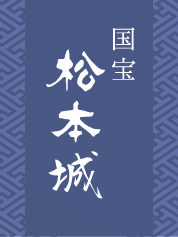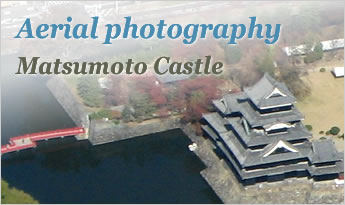Preservation and promotion of the Matsumoto Castle
The Matsumoto Castle is a historic landmark



The castle tower is a national treasure. That is not all. The stone walls and the moat of the castle is also as precious as the castle itself, and is designated as a historical site. The photo shows a historical signpost, which says that it was recognized in the 5th year of the Showa era.
The Matsumoto Castle in the Edo era was not only limited to the Ninomaru area (outer citadel): which is currently the Matsumoto Castle Park, with the Honmaru (inner citadel) and the museum where the castle tower is located in. The area with Onna City, on the southern side of the park, and the municipal office, on the eastern side is called the Sannomaru which was inside the boundaries of the castle. When the Edo era ended and became the Meiji era, the castle became unnecessary. Thus the moats were filled, earthen walls were demolished, and the Sannomaru era became a metropolitan area.
When the Showa era began, the Hongan with the castle tower and the Ninomaru region became the country’s official historical site. Yet once, there were courts and schools in that area. Eventually they all transferred out from the castle, was transformed and adjusted into a park, and thus the current Matsumoto Castle came into being. The few moats and the East Moat Earthen Wall Park founded in recent years are a part of the historical site; the Matsumoto Castle.
Below is part of the overlapped image of an illustration from the 13th year of the Kyouho era (1728) with the city planning map of Matsumoto city in the 16th year of the Heisei era. It is possible to see how the Matsumoto Castle is enclosed by three concentric moats.
 Below is part of the overlapped image of an illustration from the 13th year of the Kyouho era (1728) with the city planning map of Matsumoto city in the 16th year of the Heisei era. It is possible to see how the Matsumoto Castle is enclosed by three concentric moats.
Below is part of the overlapped image of an illustration from the 13th year of the Kyouho era (1728) with the city planning map of Matsumoto city in the 16th year of the Heisei era. It is possible to see how the Matsumoto Castle is enclosed by three concentric moats.
The maintenance of the historical site, Matsumoto Castle


The Edo era ended, and most of the buildings within the walls of the Matsumoto Castle were demolished. There were only a few buildings left, including the castle tower, Ninomaru Palace, and the Southern Sumiyagara (corner tower). However the Ninomaru Palace was burned down in the 9th year of the Meiji era (1876) and the Southern Sumiyagara was eventually taken down. The only things left in the Matsumoto Castle was the castle tower, the stone walls (earthen walls), and the moats.
After World War II, the national treasure, Matsumoto Castle was dismantled and repaired. Later on some of the Kuromon (Black Gates) and the inner moats were restored. In the 30th year of the Showa era (1960), the first Kuromon was restored, and in the 11th year of the Heisei era, the Taikomon (Drum Gate) was also restored. The maintenance of the historical site Matsumoto Castle also began then. The goal is to bring back the Matsumoto Castle in the last days of the Tokugawa Shogun. Numerous plans were made for this restoration. Currently the basic plan is to “tend the Matsumoto Castle and its surroundings. "The Research Committee for the Maintenance of the Historical Site, Matsumoto Castle has researchers and experts as members, and they formulate plans to better maintain not only the national treasure, the castle tower of the Matsumoto Castle, but the historical site, Matsumoto Castle as a whole.
The castle has endured 400 years of wind and snow; however, the stone walls have become swollen and sometimes even have collapsed. The repairs of these stone walls are projects that are also important in passing on the Matsumoto Castle to future generations. In the 26th year of the Heisei era, the gates in the gate in the southern stone wall, which was damaged by the earthquake in the 23rd year of the Heisei era, and the western stone wall of the inner moat, Ninomaru Palace were repaired. A vast amount of funding and time is necessary in order to repair stone walls of the Edo era. This operation is gradually carried out, with financial assistance from the country and the prefecture.
The ongoing repairmen of the southern and western outer moats is also a part of the project to restore the Matsumoto Castle from the last days of the Tokugawa Shogun. We will continue to maintain and enrich the Matsumoto Castle, with continuing cooperation from countless numbers of people.








